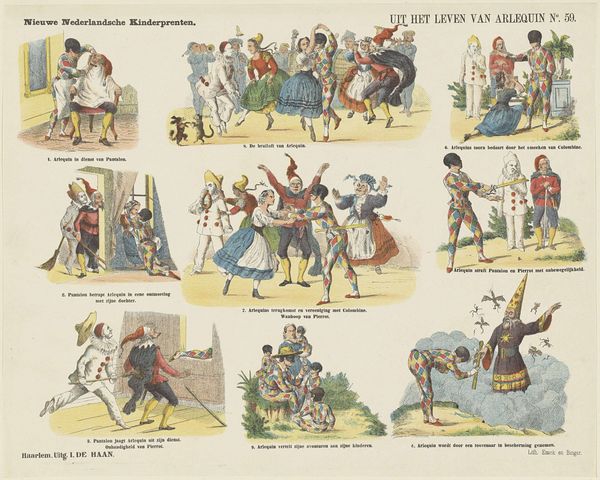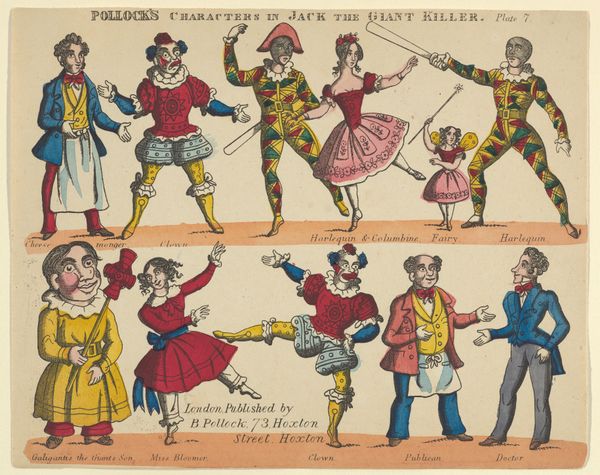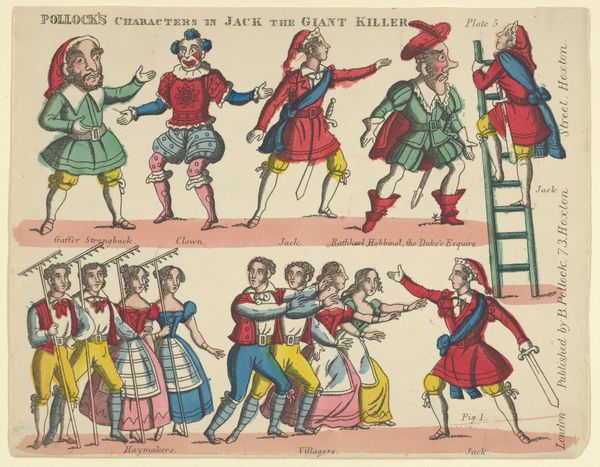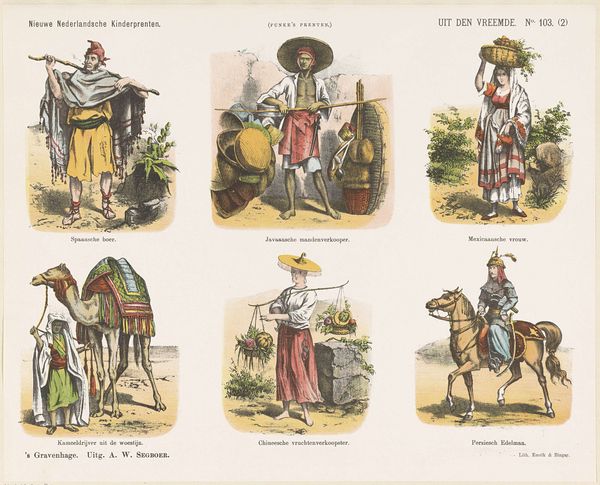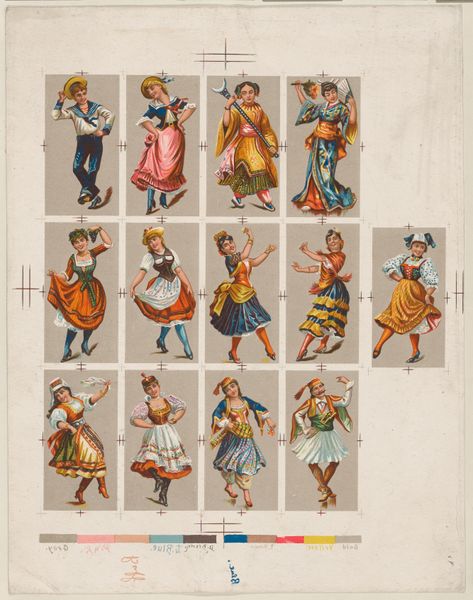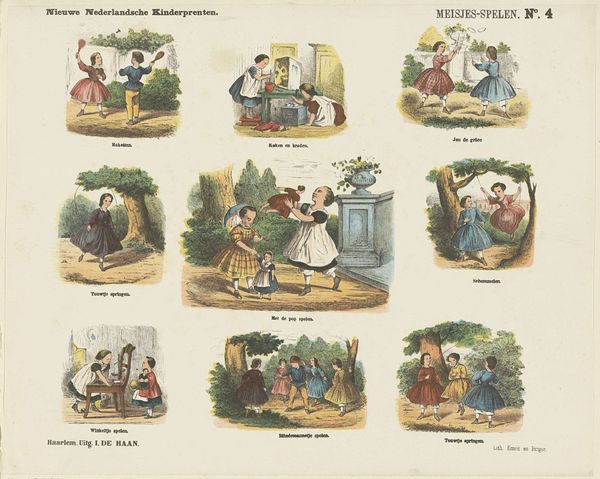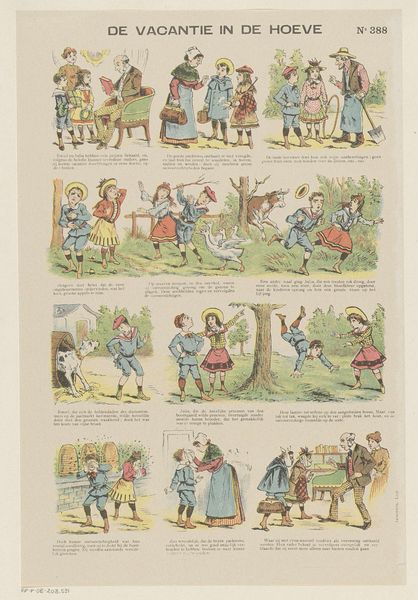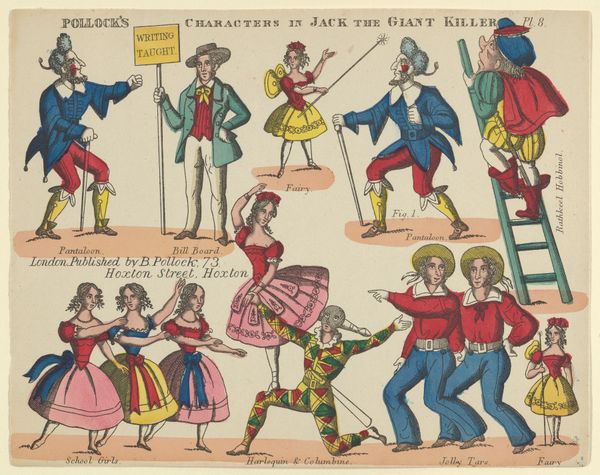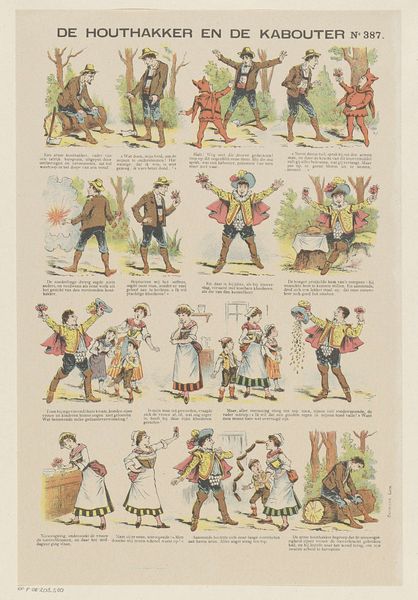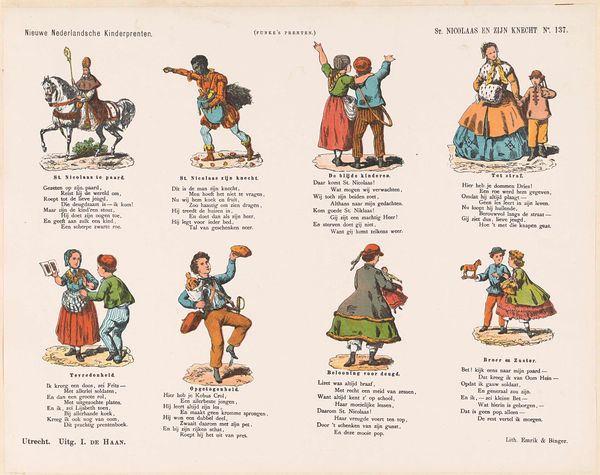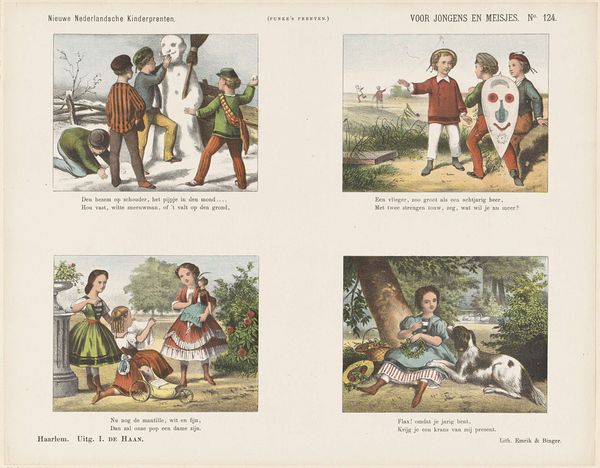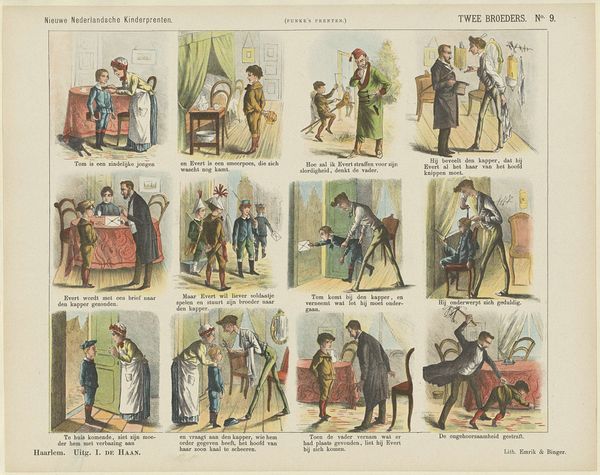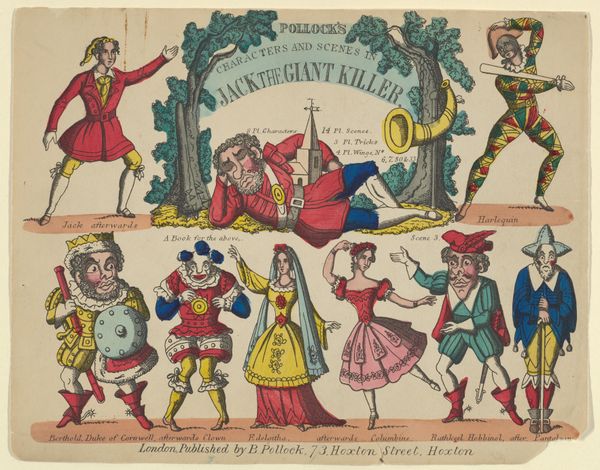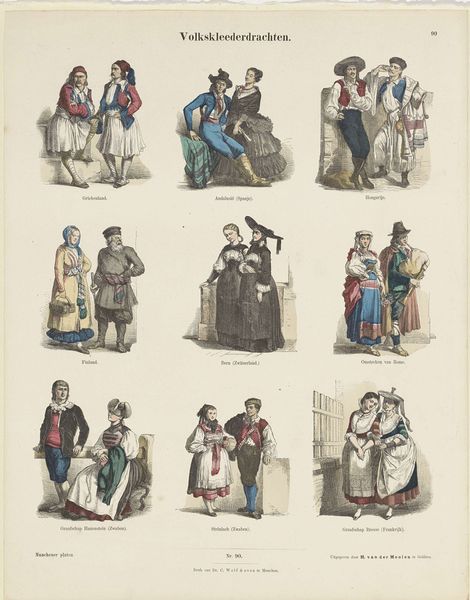
Dimensions: height 344 mm, width 429 mm
Copyright: Rijks Museum: Open Domain
Curator: This lively print, entitled "St Nicholas Gives Everyone Something!", likely dates from between 1875 and 1903. The printer was Jan de Haan. Editor: It’s so busy! My first thought is that it depicts a sort of charming chaos. Each character seems to be in their own little world, frozen in a moment of anticipation or joy. It feels very stage-like. Curator: The image is really fascinating from a material perspective. These were printed for children, cheap enough for mass consumption. We must think about how these images functioned as both entertainment, commodity, and potential tool for crafting and play, as the title tells us these were meant "to be cut out." It prompts a fascinating understanding of nineteenth-century childhood and its relationship to consumer culture. Editor: Absolutely. Looking closer, however, the visual encoding reveals a lot about social hierarchies. The central figure of St. Nicholas is on horseback, elevated both literally and symbolically. And then, look at the figure representing, what appears to be, Black Peter. It's important to critically examine the embedded racial stereotypes and colonial undertones prevalent in representations of St. Nicholas’s helpers. Curator: It is precisely these sorts of details in material culture, printed on such an easily reproduced scale, that exposes and helps solidify so much of our understanding about class and power. Consider the lithographic process itself. These would have been rapidly produced in Haarlem, perhaps by child laborers themselves. Each line and color choice reflects labor and trade in the construction of Dutch cultural identity. Editor: And this visual language, reproduced and circulated, played a powerful role in shaping cultural perceptions of both St. Nicholas' day, and the place of people in Dutch society at that time, especially children. As cute and charming as the image appears at first glance, it perpetuates very specific, exclusionary ideologies. How many children looking at this could see themselves reflected within? How many are positioned to benefit from this symbolic exchange? Curator: Ultimately, this seemingly innocent print encapsulates the complex interplay between production, consumption, and social control inherent in 19th-century Dutch society. Editor: A potent reminder to critically examine even the most seemingly innocent and festive of images, to truly consider the many ways an artwork is at once aesthetic object, social mirror, and ideological tool.
Comments
rijksmuseum about 2 years ago
⋮
With the help of this print, any child could cut out and assemble his or her own Saint Nicholas parade. The title is misleading, for children who have been lazy or naughty certainly continue to be left empty-handed. But no corporal punishment is meted out, for Pete is busy handing out presents.
Join the conversation
Join millions of artists and users on Artera today and experience the ultimate creative platform.
